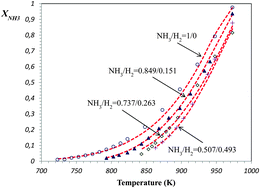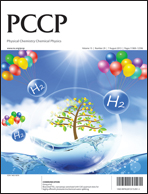The increasing interest in ammonia decomposition is due to the fact that this compound can be used advantageously as a hydrogen carrier, allowing the development of single-step hydrogen generation systems. With the aim of developing efficient reactors for ammonia decomposition, e.g. for fuel cell applications, it is imperative to investigate the kinetics and reaction mechanism in depth. The main goal of this work is to develop reliable kinetic models that are able to predict the performance obtained using integral reactors, e.g. monoliths. In this case, an almost complete NH3 conversion is obtained, with a high H2 concentration at the exit of the reactor. The operating conditions, mainly the gas composition, are very different along the reactor. In addition, the temperatures needed to attain such large conversions are usually high. The kinetic models developed in this contribution are based on the Langmuir isotherm, considering that all the adsorbed species can be kinetically relevant, that the slow step or steps can be partially reversible, and that the surface can be considered as energetically uniform, i.e. ideal. Among other conclusions, the results obtained indicate that the variable kinetic orders and apparent activation energies frequently reported in the literature can be direct consequences of the data analysis and can therefore also be explained without considering any change in the controlling step with the reaction temperature or in the hydrogen or ammonia concentration.

You have access to this article
 Please wait while we load your content...
Something went wrong. Try again?
Please wait while we load your content...
Something went wrong. Try again?


 Please wait while we load your content...
Please wait while we load your content...